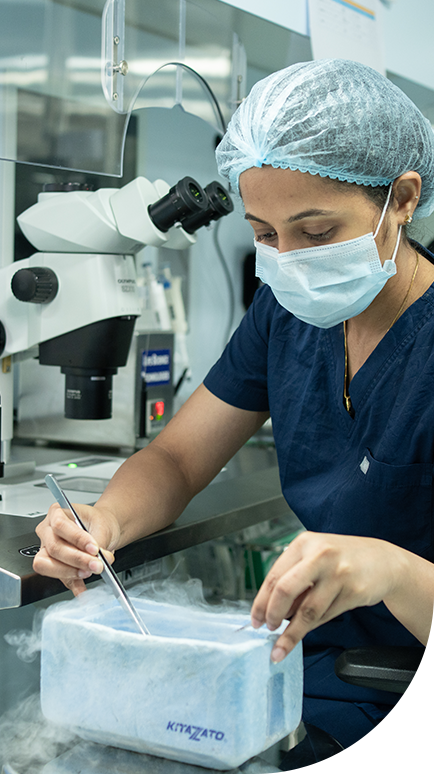FET (Frozen Embryo Transfer)

What is FET?
FET, or Frozen Embryo Transfer, is a procedure where a cryopreserved embryo, previously frozen from a prior IVF cycle, is thawed (unfrozen) and transferred into a woman’s uterus to help achieve pregnancy.
Who can opt for FET?
FET is suitable for:
- Couples with remaining super-numerary embryos after a fresh IVF cycle
- Those who have had a failed fresh IVF cycle
- Couples planning for a pregnancy at a later age by freezing embryos when younger
- Women who need to delay pregnancy for medical reasons, such as certain cancer treatments
- Couples requiring genetic testing (PGT) of embryos to avoid chromosomal anomalies or transmission to offspring of certain genetic diseases.
- Couples with a risk of ovarian hyperstimulation (OHSS) where fresh ET is contraindicated. Here, all embryos are frozen and FET is done in the next cycle once both stimulated ovaries settle back to normal
What are the prerequisites for FET?
Before undergoing FET:
- Good quality frozen embryos
- Uterus which can support pregnancy
How does FET work?
The process is as follows:
1

Discussion
Open discussion with the fertility specialist about potential outcomes and risks
2

Preparation
The uterine lining is prepared through hormones and tracked by the natural menstrual cycle
3

Assessment
An assessment of the uterine lining, typically through ultrasound to ensure it’s receptive
4

Thawing
Once the uterus reaches a receptive stage, at an appropriate time, the frozen embryo(s) are thawed in the lab. It’s crucial that they survive the thawing process & remain viable
5

Transfer
A speculum is inserted into the vagina, and the embryo is transferred to the uterus using a catheter specifically designed for the procedure. The process is done under USG guidance to ensure maximum success rate and is usually painless
Post-FET procedure

1
Limit hectic physical activity for a few days.
2
Take prescribed medications, like progesterone, to support potential implantation.
3
Attend a follow-up appointment, usually around two weeks post-transfer, to test for pregnancy
Frequently Asked Questions
How long after FET can I test for pregnancy?
Typically, a blood test is performed about two weeks after the transfer to check for pregnancy.
Is FET more successful than fresh embryo transfer?
Success rates can vary, but some studies suggest that FET might have slightly higher success rates compared to fresh transfers due to better synchronization between the embryo and uterine lining.
Are there any risks associated with FET?
As with any medical procedure, there are potential risks, but they are minimal. Discuss any concerns with your fertility specialist.
